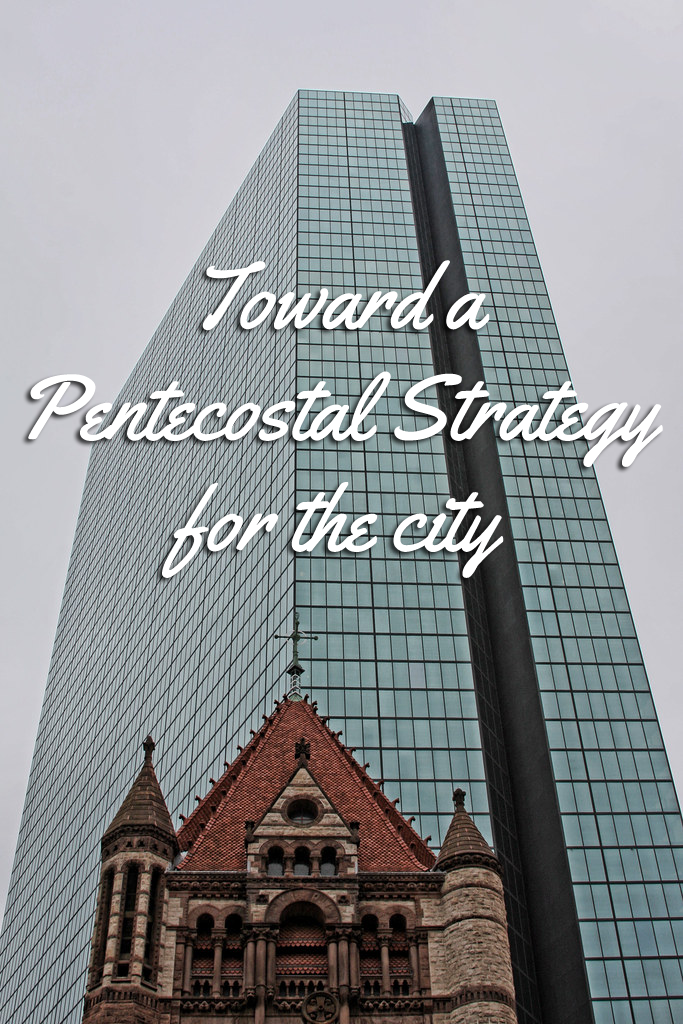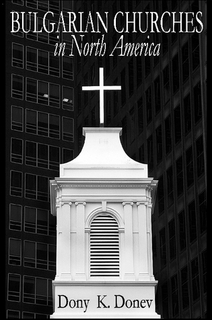Toward a Pentecostal Strategy for the City
Toward a Pentecostal Strategy for the City
One of the questions that seems to come up in this course discussion is how to change the world around us with a more positive and effective approach toward using the Gospel of Salvation. In this particular module, the difficulty addressed is ethnocentricity. The particularity of our search then arrives at the more detailed question, how can we change the culture (respectively subcultures) of our church congregations? This is a drastic move from a closed circle toward an outreach community that many congregations are unable to accomplish. How do we then empower such congregations to be transformed into cultural reach-outs to a single ethnos or multiple ethnic groups?
Problem
The problem in the first quarter of the 21st century has been incongruity of our church strategy with the times we live in and the mindset they occupy. We’ve been preparing the church for the multicultural battle, all and while we should have been equipping the saints how to rebuild the walls since the battle has been lost.
We’ve been equipping leaders for the ministry while the church ship has been sinking only to end up with well trained captains of a sunken fleet. And in a doomed attempt to reconcile the reality of the ministry with their training, they have turned to wave walkers who briefly surface for breaths of fresh air during Sunday worship only to return to the deep blue walk of their daily ministry never finding their lost piece of eight.
For the battle was lost long ago before the present generation of ministers ever came to existence. They know not the battle. They’ve only seen the ruins that were left within the broken walls of the church. And they have been struggling to reconcile the incomputable of what church eldership has been teaching them to battle against with the Nehemiah calling for restoration, which God has placed upon them. For the answer has never been in building a New Jerusalem for a fresh start, but restoring the old Jerusalem and its former glory to a new state that reclaims our history and heritage.
Context
Recent analysis of migrant churches in the United States reveals that the predominant majority of them are located in cities which have a high influxation and concentration of immigrants. Such localities are called “gateway cities”. Immigrants typically enter the United States through one of these cities and settle there. These areas contain over half of the foreign-born population in the United States as follows:
- New York, NY – Foreign born population 18.7%
- Los Angeles, CA – Foreign born population 27.1%
- Houston, TX – Foreign born population 12.3%
- Washington, DC – Foreign born population 8.6%
- Miami, FL – Foreign born population 33.6%
- Chicago, IL – Foreign born population 11.1%
- San Francisco, CA – Foreign born population 20.0%
Strategy
Asking the right questions is important, but the answers cannot be generic for all ethnic groups or cultural settings. There is a strong need to be flexible and observe changes in culture, but not to change the message of the Gospel or compromise our witness. Several common things are noted in any cultural setting where our ministry is involved:
First and foremost, people of all cultures prefer to be personal with a purpose, rather than being project driven. No one longs to be part of someone else’s project. Yet, our very existence demands personal purpose, which could serve as a great cultural catalyst in a church ministry.
Secondly, cross cultural ministry is not done merely on relationships, but on being real in the relationships. The greatest halt of ministry work is when people realize the relationship with the church has not been a real one, but merely a part of a program or a paradigm.
Finally, our cross cultural model for ministry should not be just salvation oriented, but soul oriented. There is a great difference between writing down the number of saved every Sunday and actually caring for the eternal well-being of the saved souls. In fact, this is so fundamentally determinative that it should be the goal in mind of every new church plant.
A Biblical View of the City: Gateways in Modern Day Missions
The city attracts multitudes of people, which makes a desired center for evangelism. Jesus used the city to present His ministry. Paul and the Early Church made it a goal to their mission to establish a new church as a community of believers in many cities of importance within the ancient world. The city strategy has not changed in modern day missions either. Recent analysis of migrant churches in the United States reveals the predominant majority of them are located in cities which have a high influxation and concentration of immigrants. Such localities are called “gateway cities”. Immigrants typically enter the United States through one of these cities and settle there. These areas contain over half of the foreign-born population in the United States as follows:
1. New York, NY Foreign born population 18.7%
2. Los Angeles, CA Foreign born population 27.1%
3. Houston, TX Foreign born population 12.3%
4. Washington, DC Foreign born population 8.6%
5. Miami, FL Foreign born population 33.6%
6. Chicago, IL Foreign born population 11.1%
7. San Francisco, CA Foreign born population 20.0%
95 Years Ago Ivan Voronaev Finally Reached the City of Odessa
![51Sa1IcA8OL._SY344_PJlook-inside-v2,TopRight,1,0_SH20_BO1,204,203,200_[1]](https://cupandcross.com/wp-content/uploads/2014/03/51Sa1IcA8OL._SY344_PJlook-inside-v2TopRight10_SH20_BO1204203200_1.jpg) Not So “Little Odessa” (from the book The Life and Ministry of Rev. Ivan Voronev)
Not So “Little Odessa” (from the book The Life and Ministry of Rev. Ivan Voronev)
By the end of the summer of 1921, Voronaev and Koltovich received their permits to return to Russia and on August 12, 1921 landed in Odessa.[1] It had taken Voronaev over a decade of traveling around the globe to return to his motherland as a Pentecostal preacher and fulfill the divine calling: “Voronaev, Voronaev. Go to Russia!”
The results of his commitment and sacrifice increased quickly. For the first three months in Odessa, he labored among the evangelical churches, sharing his testimony and preaching the full gospel. Then, on November 21, 1921 he organized the Christian Evangelical Faith (Confession).[2] In two years time, the new community had over 370 members and the news of the new Pentecostal teaching spread rapidly across the U.S.S.R. In 1924, the Odessa community organized a regional assembly and at the second assembly in 1925, the Ukrainian Union of Evangelical Christian Faith (Confession) was established.
By 1927, more than 350 Pentecostal Assemblies with membership of 17,000 strong were part of the Union,[3] which continued to grow and by 1944 exceeded 20,000 in Ukraine and 80,000 strong in the whole U.S.S.R.[4] Voronaev’s church in Odessa alone was reported to have over 1,000 members.[5] Government persecution was inevitable. Numerous publications against Voronaev’s work were circulated not only through Communist propaganda, but by some Baptist periodicals, who characterized the Pentecostal ministry as sectarian at best.[6] The Regime could not afford the meetings of large groups of people who were not part of the Communist Party. The Voronaev family paid the ultimate price of their calling for organizing and growing the Pentecostal community in Communist Russia.
In the summer of 1930 the repressions against Russian Pentecostals began. On July 6 (almost exactly 10 years after he left America for his prophesied mission to Russia) Ivan E. Voronaev and B.R. Koltovich, along with some 800 Russian pastors,[7] were arrested for preaching the Gospel through the support of churches outside the U.S.S.R., both sufficient reasons to be convicted in espionage and imprisoned in Siberian work camps.[8] Voronaev’s wife was also sentenced to imprisonment in mid-Asia. Their children were left without provision and no one to take care of them…[9]
[1] Ibid.,8.
[2] Ibid.,9.
[3] Koltovich, “Minutes of the Jubilee Meeting”, 10 and Evangelist (Odessa: 1928, No. 1) Quoted in Durasoff, 73 and Smolchuck, 4.
[4] Zhidkov, “On the Roads …” (Bv, No. 3, 1957), 62. Around 1936 Donald Gee, who had an extensive ministry at the Assemblies of God training program for ministers at Gdanks (Danzig), Poland, claimed some 80,000 Pentecostals in Russia in Upon All Flesh (Springfield: The Gospel Publishing House, 1947), 31. Both quoted in Durasoff, The Russian Protestants. For a more detail discussion on the growth of Pentecostalism in the U.S.S.R see V.I. Franchuk, Prossila Rossia Dozhdia u Gospoda (n/a: Kiev, 2001).
[5] McLeod, Hugh. Christianity: World Christianities c. 1914-c. 2000 (Cambridge: Cambridge University Press, 2006), 97.
[6] Durasoff, 73.
[7] McLeod, 97.
[8] Burgess, Stanley M. and Eduard M. van der Maas, The New International Dictionary of Pentecostal and Charismatic Movements (Zondervan: Grand Rapids, 2002), 1179-80.
[9] For the situation in Russia and the story of the Voronaev children see Voronaeff, Paul. Christians under the Hammer and the Sickle (Wichita: Defender Publishers, 1935). Book was printed a total of 11 times in some three years time.










